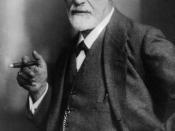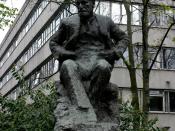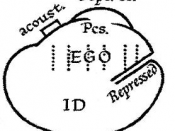Throughout his book Dora: An Analysis of a Case of Hysteria, Sigmund Freud discusses the nature of hysterical symptoms by applying the concept to one of his patients. He concluded that our powerful desires are always in conflict, and his theories tried to account for how theses conflicts give rise to unintentional expression. His interpreted Dora's dreams and her other unconscious acts which helped him to prove that they reveal wishes that we would rather not face more directly.
Freud first explains how he thinks our body works. He describes distinct characteristics of all people saying that we have a conscious perception, and preconscious and an unconscious perception. He believed that in our conscious state, we perceive everything in the world around us. In the pre-conscious state, we are aware of many things, however, not everything. The last level deals with the unconscious, also called the ID. This is the state he is most interested in.
He believes that our instincts in this stage are so powerful that we are never conscious about what is going on. Most of our traumatic experiences we bury in this level because we want to repress and not deal with them. Therefore, this buried emotion remains trapped and censored in the unconscious level. Freud then goes to explain that sometimes our censor doesn't fully operate, which causes these negative emotions to seek through by mediated or masked forms (ex. Dreams). This is why the Freud examines Dora's dreams and uncontrolled actions in this book.
Freud decided that Dora became hysterical at the age of 14 because she got "weirded out"� by an older man hitting on her. He thinks this is evidence of a hysterical symptom because she didn't respond to the sexual advances. Any normal girl, he explains, would have advanced instead...


